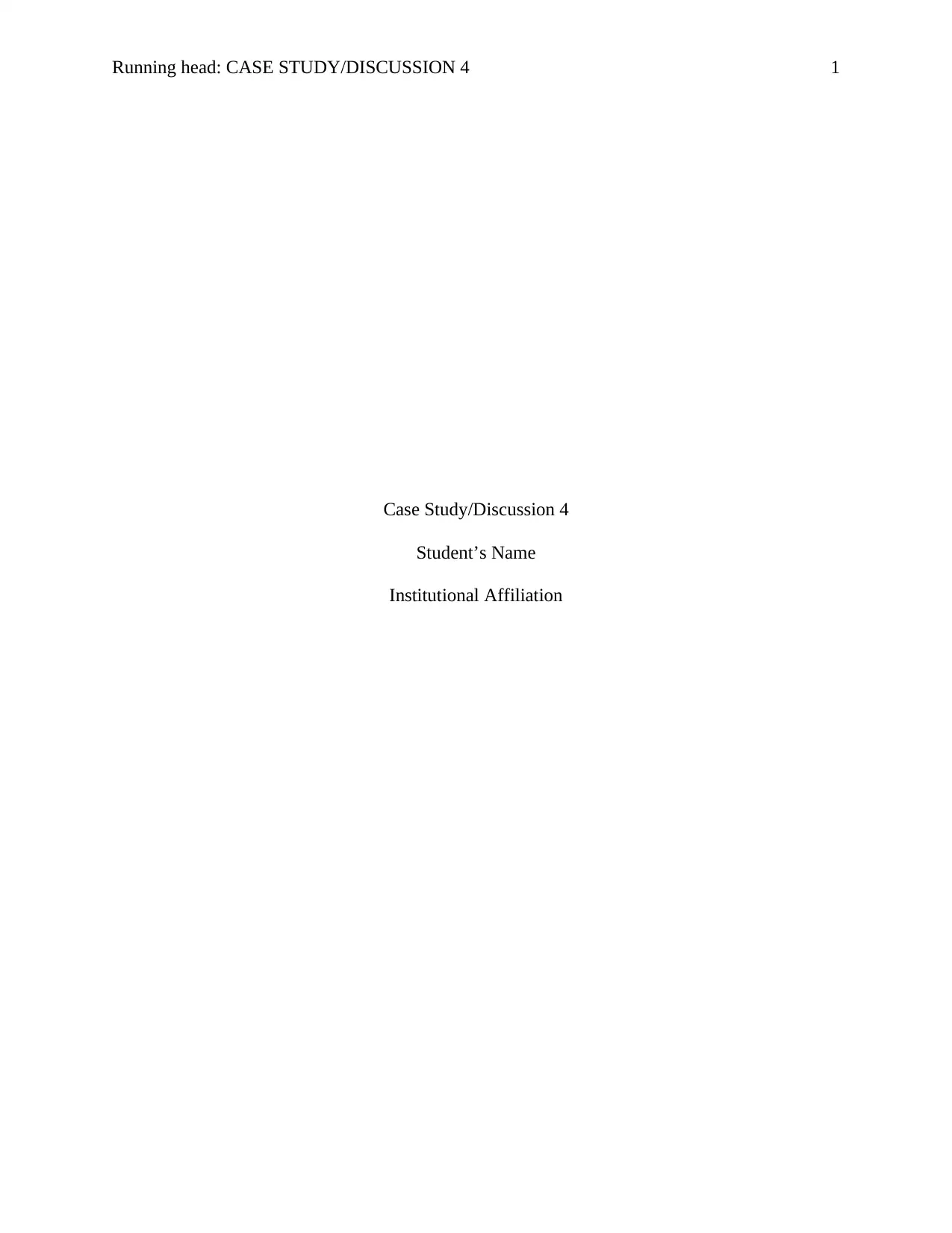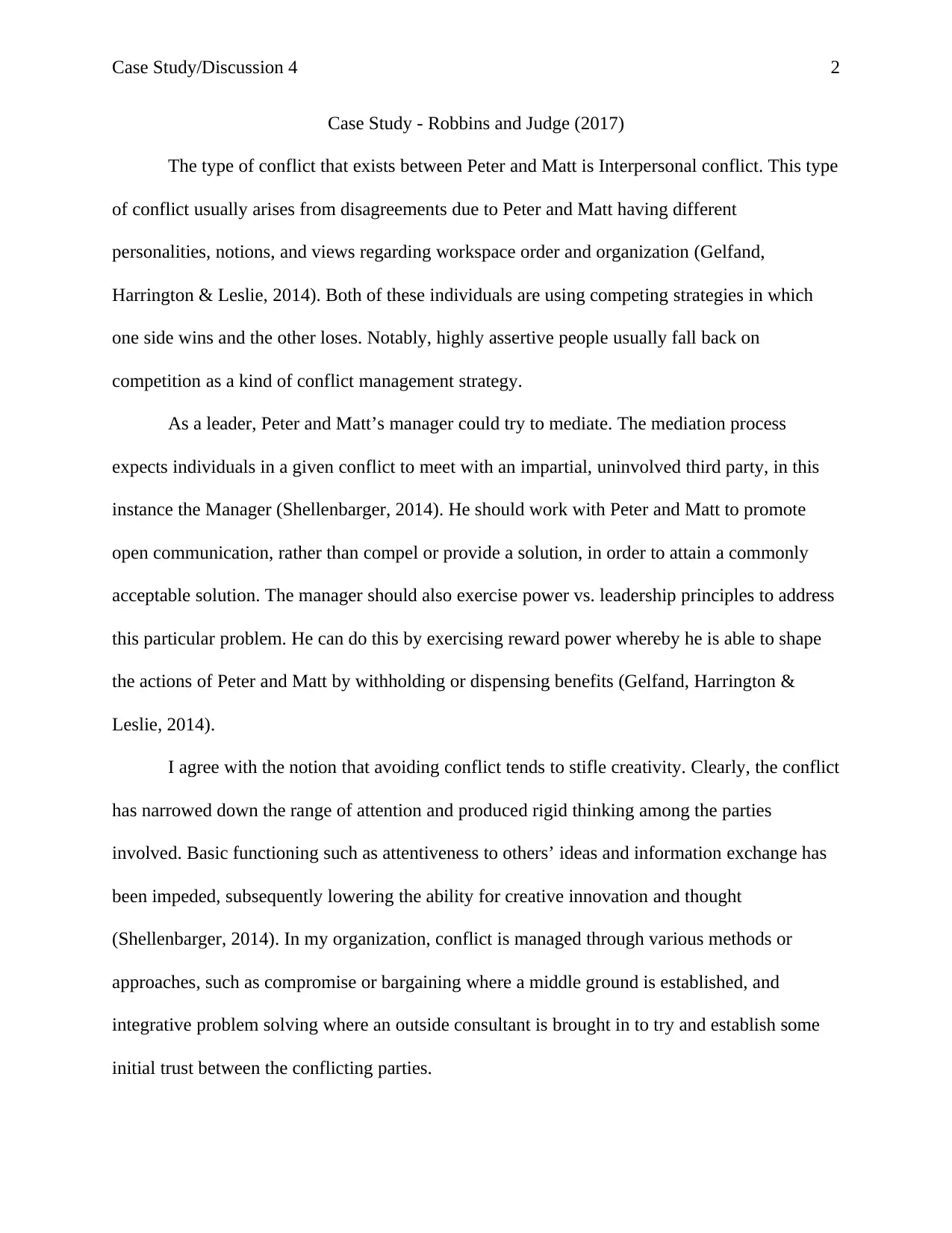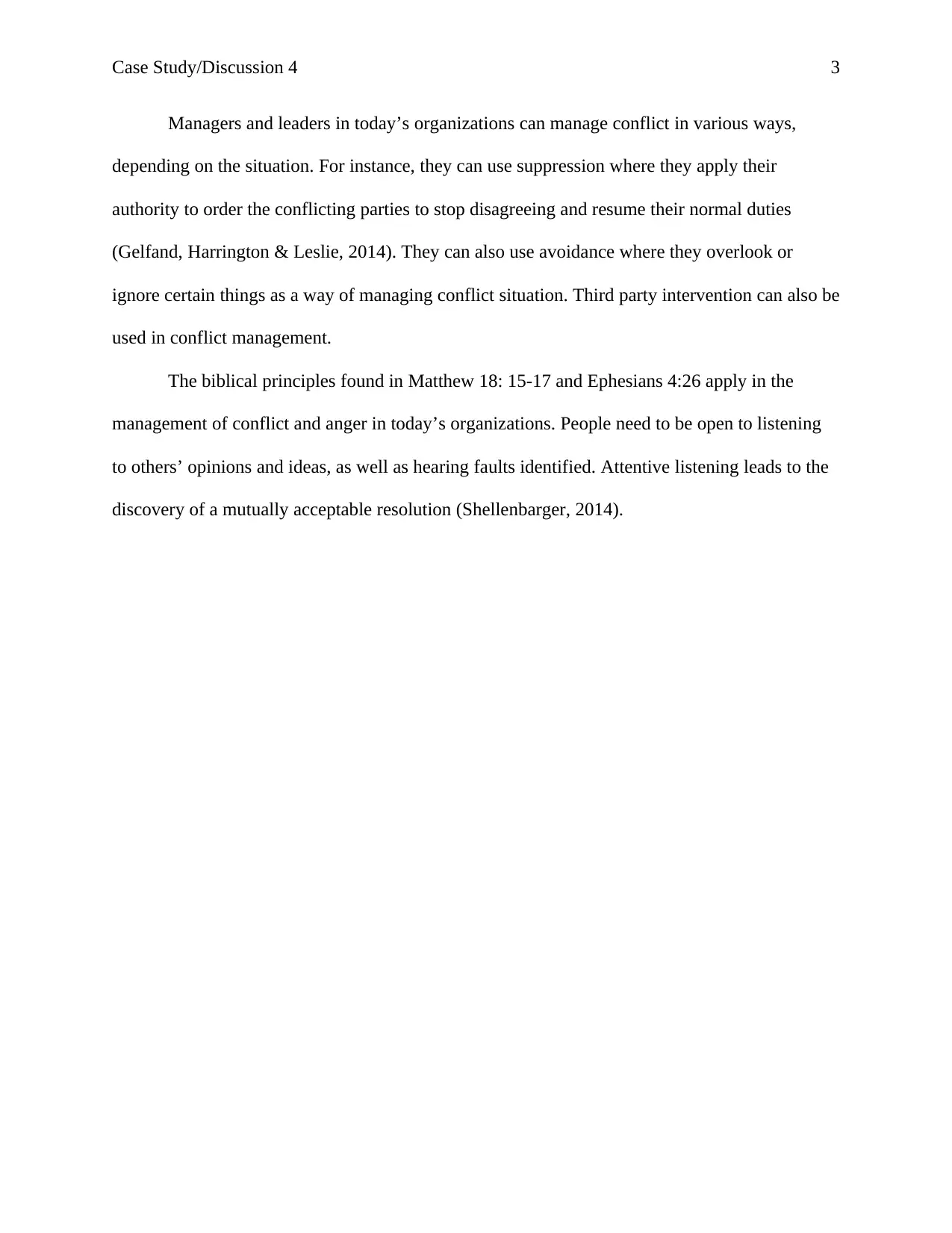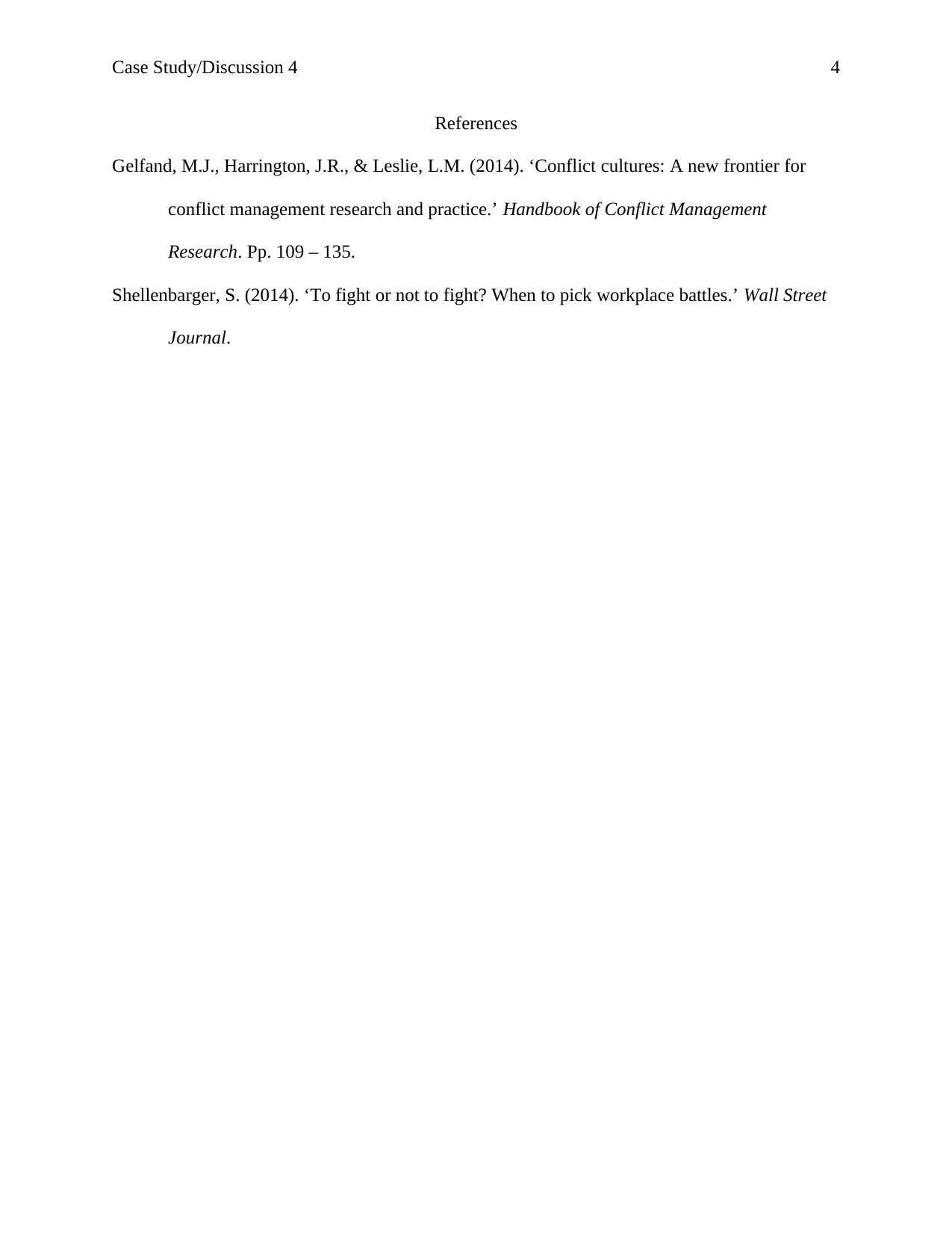Conflict Management Case Study: Analysis and Solutions
VerifiedAdded on 2021/06/15
|4
|559
|114
Case Study
AI Summary
This case study examines a conflict between two individuals, Peter and Matt, stemming from differing opinions on workspace organization. The analysis identifies the conflict as interpersonal, highlighting the use of competing strategies. The assignment explores the role of the manager in mediating the conflict, emphasizing the use of power and leadership principles to promote open communication and find mutually acceptable solutions. The analysis also discusses the negative impact of conflict on creativity and the various conflict management methods employed in organizations, such as compromise, integrative problem-solving, and suppression. Furthermore, it emphasizes the importance of biblical principles like attentive listening in resolving conflicts. The assignment concludes by providing insights into how managers and leaders can effectively navigate and resolve conflicts in the workplace, promoting a more productive and harmonious environment.
1 out of 4






![[object Object]](/_next/static/media/star-bottom.7253800d.svg)